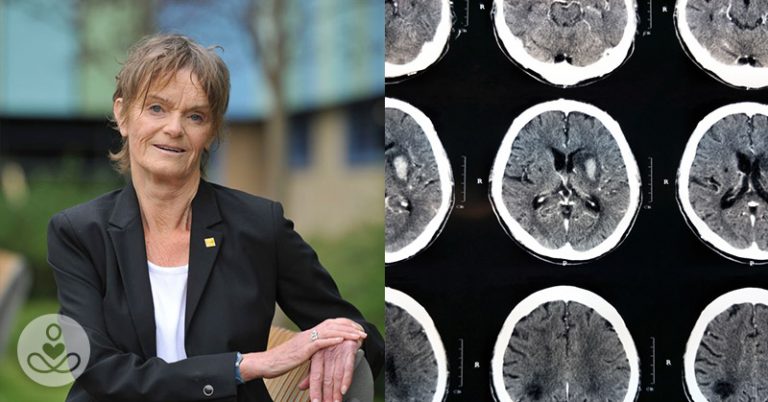Multiple sclerosis (MS) is an inflammatory disease of the central nervous system, affecting 2.3 million people in our world. MS is as an immune-mediated disease, where the immune system attacks the protective myelin sheath which covers nerve fibers, causing communication issues between your brain and the rest of your body. Curing multiple sclerosis seems like it’s still far away.
Eventually, the disease can cause nerves to deteriorate or become permanently damaged. Currently there is no cure for MS, however Dr. Su Metcalfe and her company, LIFNano are hoping to change that.
Since there is no cure for the autoimmune-like disease, the method of action for people with MS is to suppress the immune system with pharmaceuticals. Since the brain cannot be repaired, such as other vital organs, and the high price tag on MS drugs also come with a list of side effects, Su is working to find a solution.
Potentially curing Multiple Sclerosis
After discovering a small binary switch which regulates inside the immune cells. Su is now working with a stem-cell particle called LIF, which has the potential to control the cell and ensure it doesn’t attack healthy bodily tissues, while still protecting us and releasing an attack when needed. LIF stem-cell particles are a form of regenerative medicine, playing a role in tissue repair while keeping the brain and spinal cord healthy.
Su’s approach is what she calls a “double whammy”, she’s finding a way to reverse the autoimmunity, and also repair the damage caused in the brain.”
After celebrating her discovery, she hit a snag, she found that LIF could only survive for 20-minutes before being broken down by the body, meaning there would not be enough time for the therapeutic actions to deploy. This is where the technology of nanoparticles came in.
The Role of Nanoparticles
A combination of LIF and nanoparticles are compatible with the body, and they slowly dissolve like soluble stitches. The nanoparticles become the delivery device which administers the LIF over a period of five days.
As Su states “the nanoparticle itself is a protective environment, and the enzymes that break it down can’t access it. You can also decorate the surface of the particles with antibodies, so it becomes a homing device that can target specific parts of the brain. So you get the right dose, in the right place, and at the right time.”
The particles themselves were developed at Yale University, but LIFNano has the worldwide license to deploy them, and Su believes we are on the verge of some groundbreaking medicine.
How Nano-Medicine is Helping
She says: “Nano-medicine is a new era, and big pharma has already entered this space to deliver drugs while trying to avoid the side effects. The quantum leap is to actually go into biologics and tap into the natural pathways of the body.
“We’re not using any drugs, we’re simply switching on the body’s own systems of self-tolerance and repair. There aren’t any side effects because all we’re doing is tipping the balance.
Auto-immunity happens when that balance has gone awry slightly, and we simply reset that. Once you’ve done that, it becomes self-sustaining and you don’t have to keep giving therapy, because the body has its balance back.”
LIFNano has already attracted two major funding awards, from drug firm Merck and the Government’s Innovate UK agency. Su hopes to attract more investment in her work, with the aim of starting clinical trials in 2020.
“We’ve got everything we need in place to make the nanoparticles in a clinically compliant manner, it’s just a case of flicking the switch when we have the money. We’re looking at VCs and big pharma because they have a strong interest in this area. We’re doing all our pre-clinical work concurrently while bringing in the major funds the company needs to go forward in its own right.”
Working with immune cells has been a big part of Su’s career, she is passionate about the subject. “The immune cell is the only single cell in the body that is its own unity, so it functions alone.
It’s probably one of the most powerful cells in the body because it can kill you, and if you haven’t got it you die because you haven’t got it.”
While MS is her focus at the moment, this work will “lead into other major autoimmune disease areas.”
I think we’re all looking forward to the future with Su and her works with LIFNano. She also states that “Psoriasis is high up on our list, and diabetes is another.
Downstream from there are all the dementias since LIF is a major health factor for the brain – if we can get it into the brain we can start protecting against dementia.”
Her research is significant and inspiring. You can follow along with LIFNano’s research and progress, here.
Keep Reading: Many people laughed when he said he had a treatment for cancer. No one said a word when he won the Nobel Prize for it…
- ‘LIF and Multiple Sclerosis: One Protein with Two Healing Properties’ Science Direct Su M. Metcalfe. Published February 2018.
- ‘Meet the Cambridge scientist on verge of curing Multiple Sclerosis’ Cambridge News Matt Gooding. Published June 12, 2017.
- ‘Patients volunteer for pioneering treatment by Cambridge scientist on verge of curing multiple sclerosis‘ Cambridge News Tara Cox. Published June 9, 2017.

